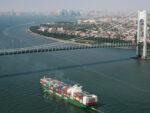Cost-push price increases (or so-called “cost-push inflation”) does not merit to be called inflation at all, because it is only a temporary price increase but nothing persistent.
The base economic principle is that prices are determined by the market. Buyers and sellers find a price level where demand and supply are equal. Therefore inflation is sometimes divided into a supply and demand part. The demand side is also called demand-pull inflation. It arises when higher demand helps to increase prices.
Supply-side inflation is often called cost-push inflation.
Cost-push inflation occurs when a shortage of supply of labor, raw materials or capital, often in “push-like” sudden shock. The demand remains the same, but since there are fewer goods or services, the supplier can charge more per unit. However, this can only occur if demand for the end product or service is inelastic. (source)
Cost-push inflation is typically caused by (partial source):
- Natural Catastrophes: sometimes also called “cost-push/Work of God”.
- Imported Inflation often occurs in less developed countries. Capital outflows and a currency devaluation will increase the domestic price of imports.
- Higher Taxes: Tax increases like VAT or sales tax will increase the prices of goods.
- Higher Price of Commodities. A rise in the price of oil would lead to higher petrol prices and higher transport costs. Countries with higher oil consumption and lower consumption taxes on oil, e.g. the United States, would suffer higher price increases.
- Higher Food Prices in the CPI basket. In western economies food is a smaller % of overall spending, but in developing countries, it plays a bigger role.
- Higher Wages. Wages are one of the main costs facing firms. Shortages of labor and rising wages will push up prices as firms have to pay higher costs.
Already in 1981, Dallas S. Batten argued in “Inflation: The Cost-Push Myth” (in St. Louis Fed) that inflation is a persistent rise in the overall level of prices and that cost-push is only a temporary movement:
Needly to say, the list of those contributing to inflation quickly becomes quite large: farmers (rising food prices), participants in financial markets (rising interest rates), foreigners (rising oil prices),etc. The public then believes that almost everyone is responsible for inflation, and a myriad of government agencies are formed to regulate prices in various markets, protecting some people from the presumed excesses of others…..
Though the cost-push argument is appealing on the surface, neither economic theory nor empirical evidence indicates that businesses and labor can cause continually rising prices. All firms produce a quantity and charge a price that they expect will yield the highest profit. .. If a firm with some monopoly power [e.g. OPEC] chooses to raise its price arbitrarily, the quantity that it can sell decrease – since a monopolist faces a downward sloping demand curve – and its profits will fall…. A monopolist may charge higher prices than a competitive firm, but this does not imply constantly rising prices.
Looking at the six factors above, only the last two may be persistent.
- Catastrophes are only temporary. The market is able to overcome supply shortages with time.
- Imported inflation stops once the local currency stabilizes again. This is typically when locally produced goods become cheaper than imported ones and when these local goods are incorporated in the price indices.
- Tax hikes are one-off.
- Oil Prices: The Federal Reserve excludes food and energy prices in their interest rate gauges “core consumer price index” and “core GDP price deflator”, knowing well that oil can only cause temporary price increases. A sudden oil price increase might even trigger recession and deflation, like recently seen in 2008/2009. The argument that one-off higher oil prices end up in other products may be a short-term movement, but nothing which is persistent. If oil is expensive and important for the consumer then he might reduce purchases of other products.
Food prices typically rise more than other inflation components when Emerging Markets (EM) recover their delay against the developed world (DM), because agricultural technology and supply cannot cope with rising global food demand. This rising food demand, however, is caused by rising wages and income in these developing nations. It is amplified by the fact that CPI baskets in EM contain more food than the ones in DM. The argument that rising food prices are caused by demand and rising wages in EM is applicable for oil prices, too.
Hence the only remaining factor that causes persistent inflation is wages, and these are mostly driven by “inflation expectations“. In the 1970s politicians blamed businesses for continually increasing their prices to gain higher profits; then labor unions demanded higher wages when they expected prices to go up and reduced company profits again. Companies were forced to raise prices again: a “wage-price spiral” started that lasted for a decade.
Monetarists and Austrian economists identify inflation with rising money supply. We agree that more money supply is the (balance sheet-) equivalent of more loans and more investments.1 More investments lead to more employment and finally to higher wages. However, some investments may be economically justified only by low rates and quickly abandoned afterwards, resulting in higher unemployment, while for other employees higher wages stay. Stagflation may arise.
In the second part we will argue that local cost-push inflation, e.g. in the U.S. of the 1970s, can be seen as global demand-pull inflation.
Further reading:
- Bear in mind that as opposed to the 1970s and to emerging markets today, an expansion of the monetary base in developed nations is relatively unrelated to higher money supply. [↩]




















